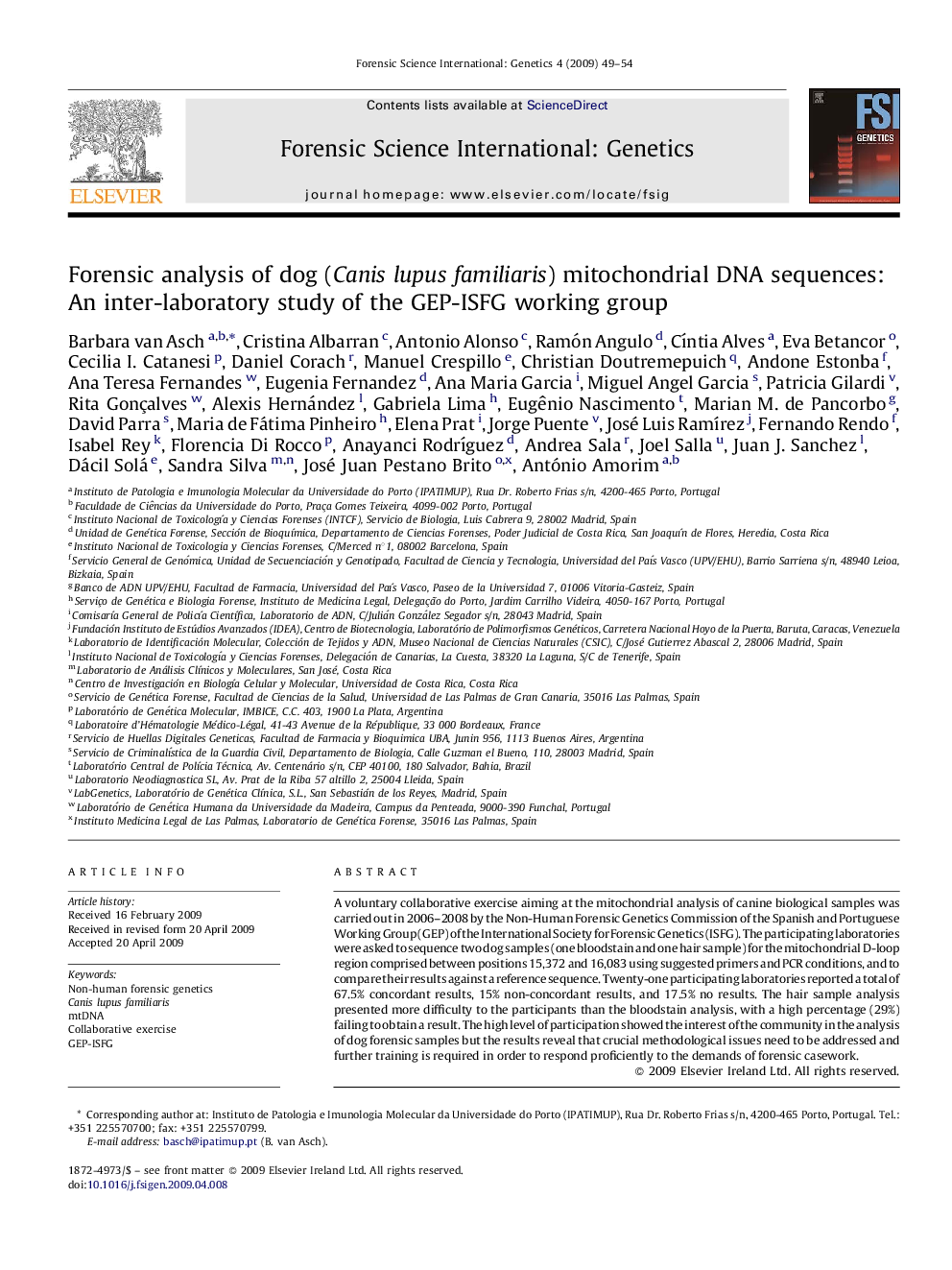| Article ID | Journal | Published Year | Pages | File Type |
|---|---|---|---|---|
| 99398 | Forensic Science International: Genetics | 2009 | 6 Pages |
A voluntary collaborative exercise aiming at the mitochondrial analysis of canine biological samples was carried out in 2006–2008 by the Non-Human Forensic Genetics Commission of the Spanish and Portuguese Working Group (GEP) of the International Society for Forensic Genetics (ISFG). The participating laboratories were asked to sequence two dog samples (one bloodstain and one hair sample) for the mitochondrial D-loop region comprised between positions 15,372 and 16,083 using suggested primers and PCR conditions, and to compare their results against a reference sequence. Twenty-one participating laboratories reported a total of 67.5% concordant results, 15% non-concordant results, and 17.5% no results. The hair sample analysis presented more difficulty to the participants than the bloodstain analysis, with a high percentage (29%) failing to obtain a result. The high level of participation showed the interest of the community in the analysis of dog forensic samples but the results reveal that crucial methodological issues need to be addressed and further training is required in order to respond proficiently to the demands of forensic casework.
